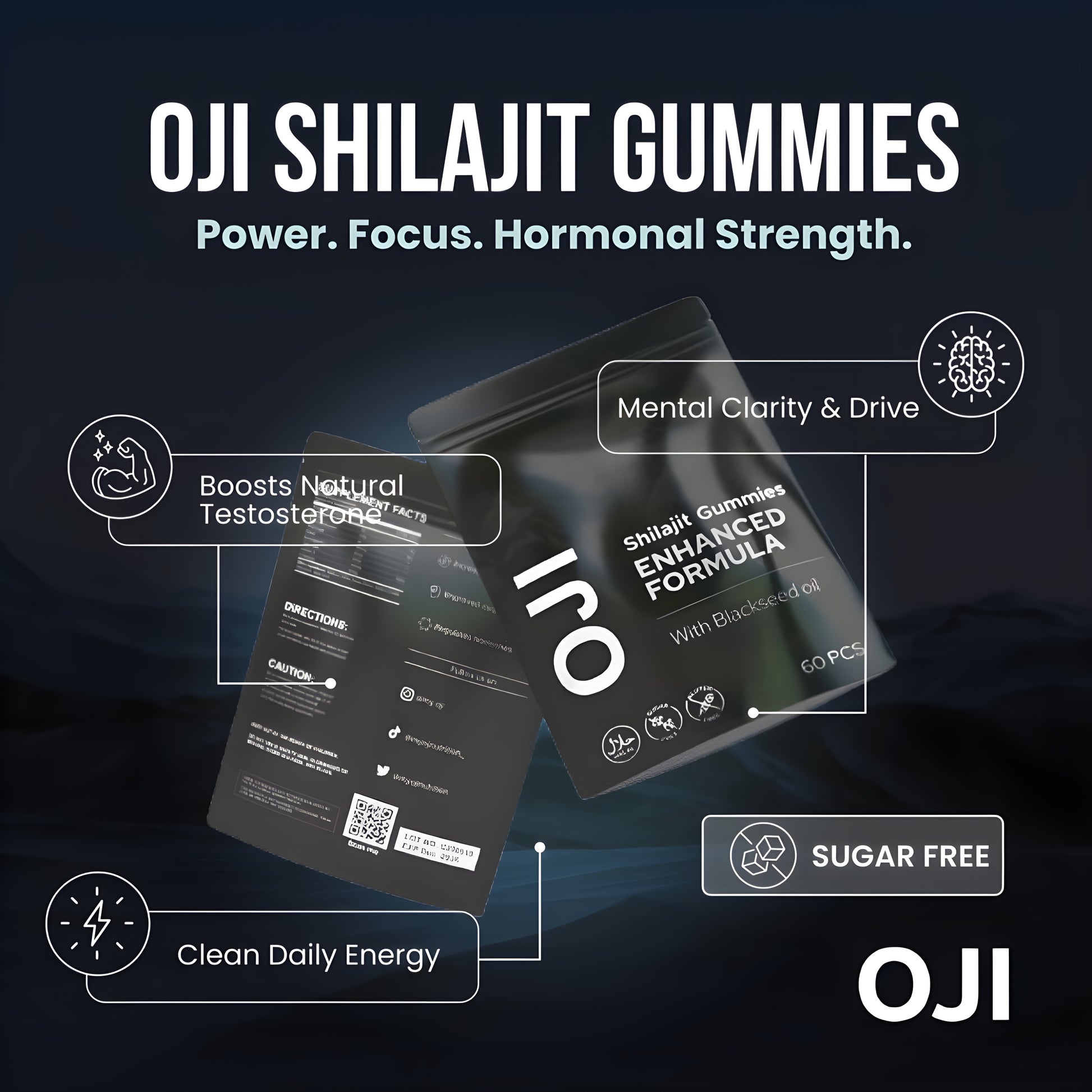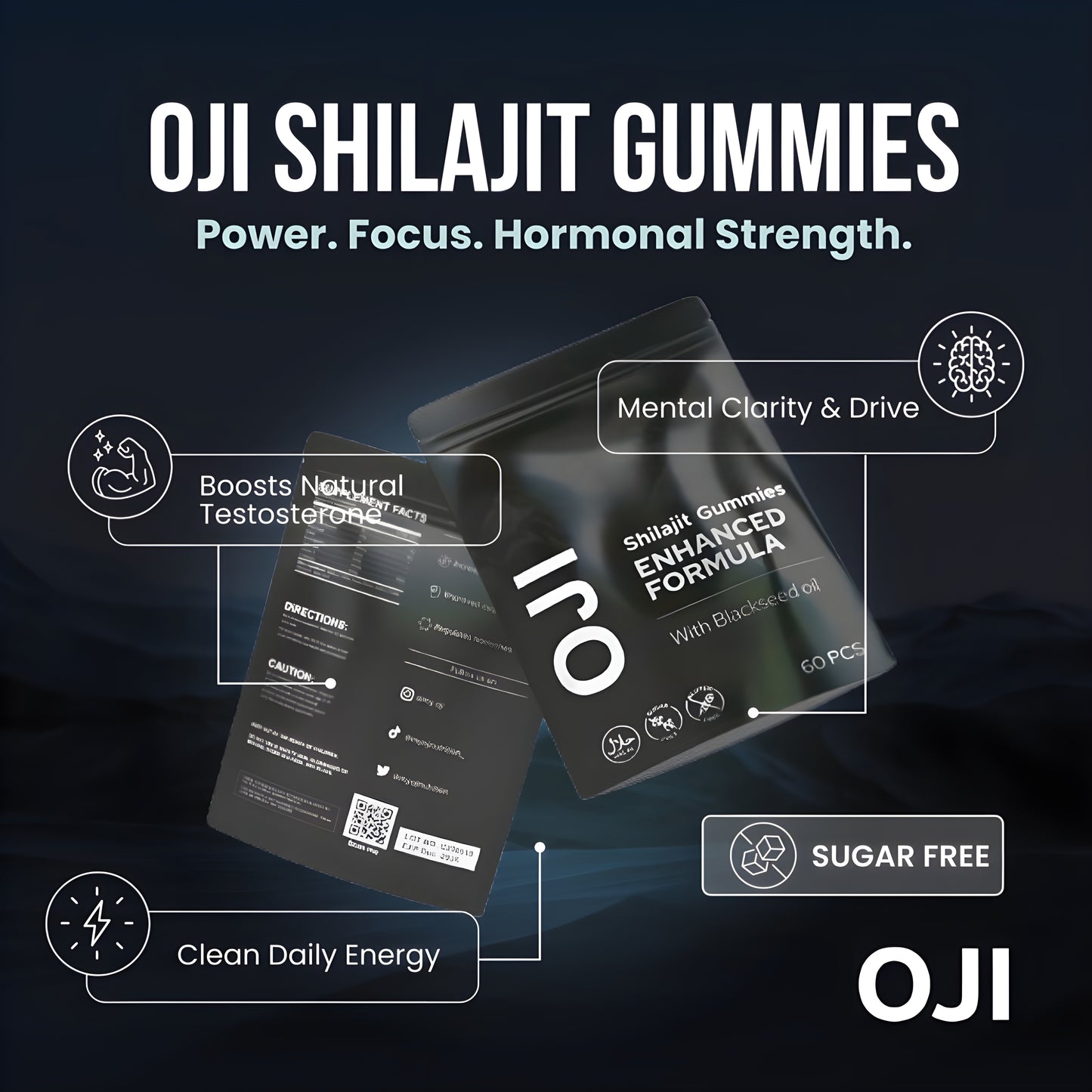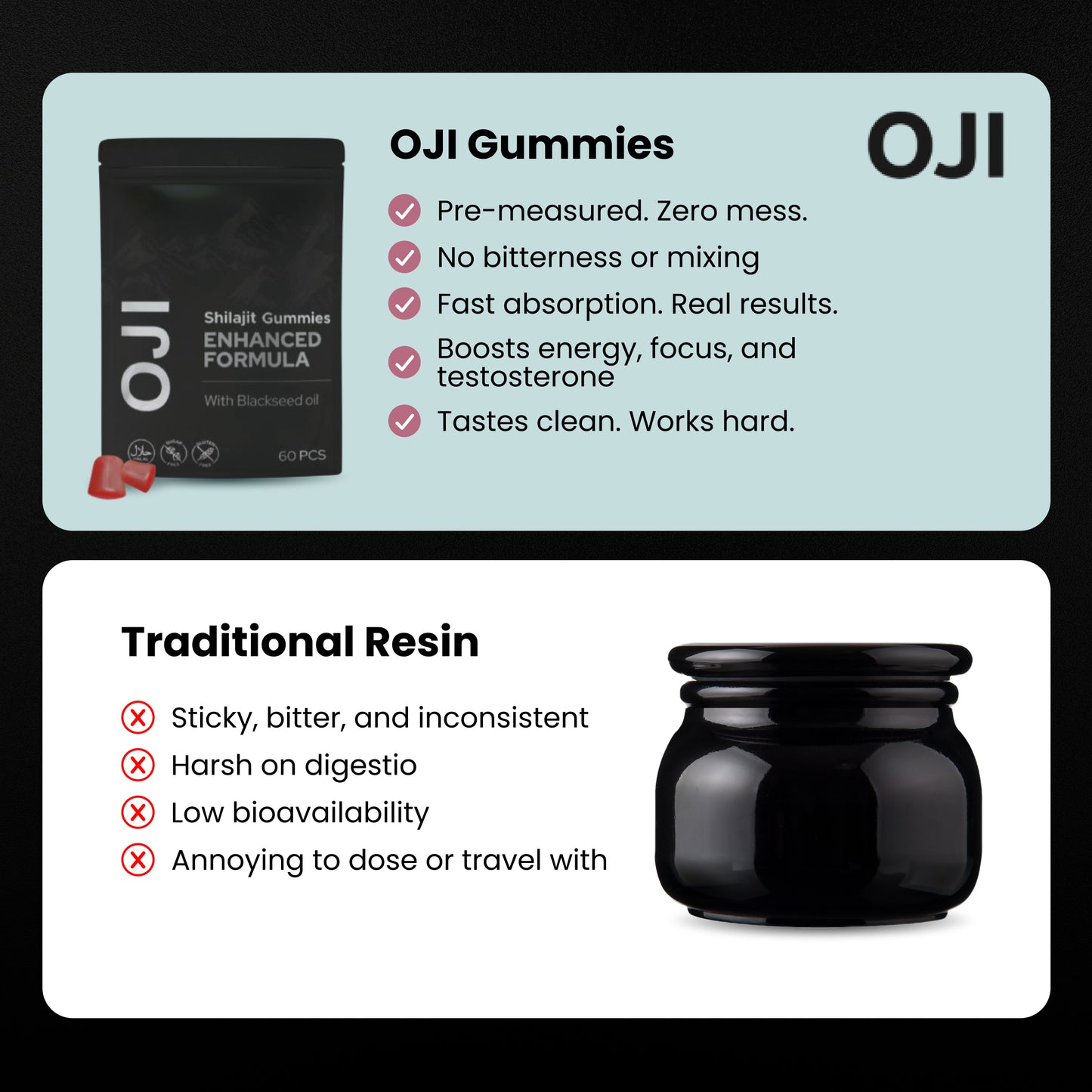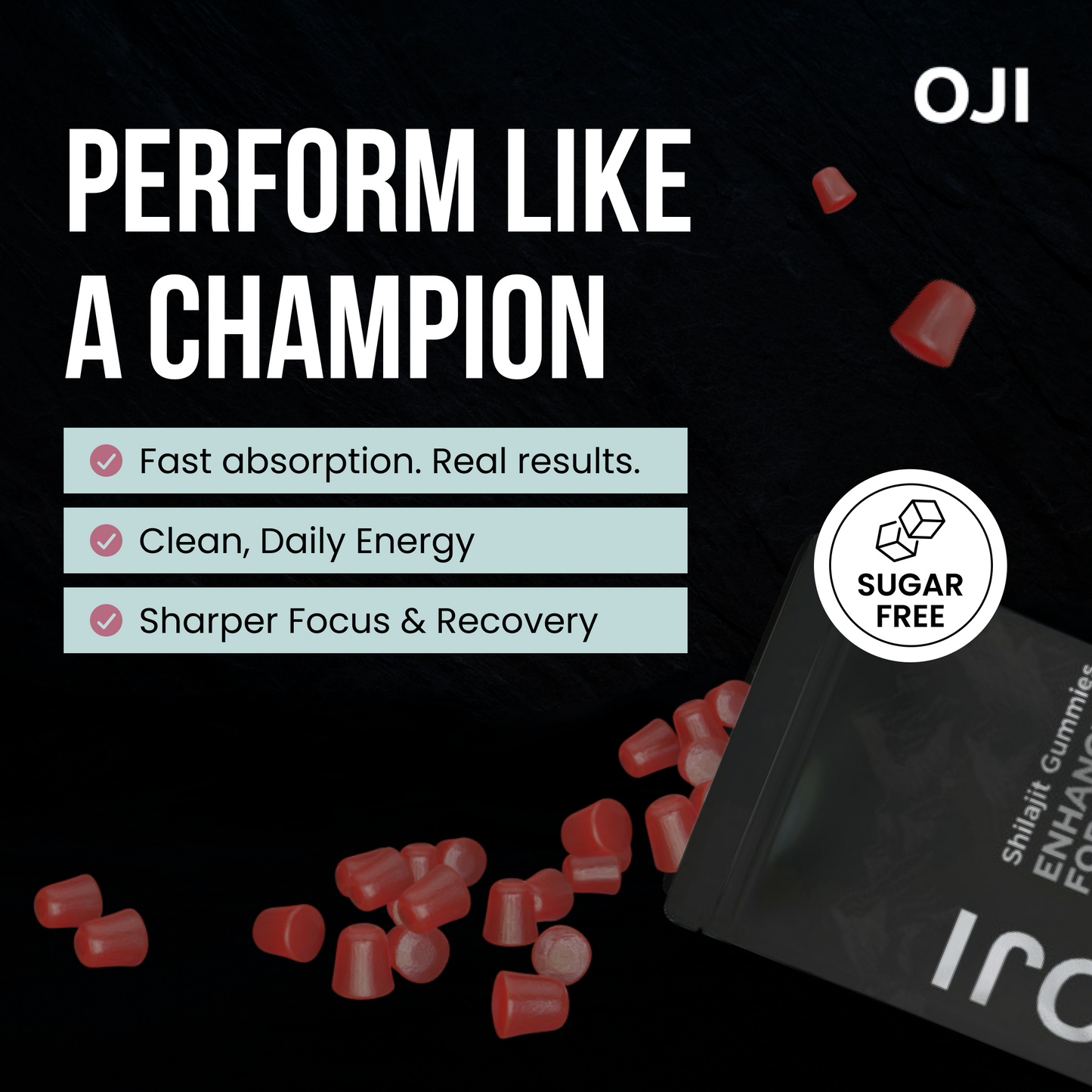Brain Fog Be Gone: Reclaim Your Mental Clarity
Feeling foggy? Can't focus? This listicle reveals eight effective ways to get rid of brain fog fast. Whether you're an athlete seeking peak performance, a professional needing sharp focus, or simply looking for natural ways to boost your mental clarity, these strategies can help. Learn how hydration, intermittent fasting, oxygen enhancement, strategic caffeine use, cold exposure, nootropics, micronutrients, and dopamine resets can help you banish brain fog and unlock your full cognitive potential.
1. Hydration Protocol
If you're looking for a fast and effective way to get rid of brain fog, the Hydration Protocol should be your first port of call. Brain fog – that frustrating feeling of mental sluggishness, forgetfulness, and lack of focus – can often be attributed to something as simple as dehydration. Considering our brains are approximately 75% water, it's no surprise that even mild dehydration can significantly impair cognitive function. The Hydration Protocol combats this by ensuring your brain has the water it needs to operate optimally. This involves strategic water consumption throughout the day, going beyond simply drinking when you feel thirsty.

This approach deserves its place at the top of this list because it offers a potentially immediate solution to brain fog, often working within 30 minutes. It's a cost-effective strategy with no side effects (when implemented correctly) and provides additional health benefits beyond mental clarity. The Hydration Protocol involves consuming 2-3 liters of filtered water daily, incorporating electrolyte balance considerations, and following a time-based drinking schedule. It’s not just about how much you drink, but when you drink it.
Silicon Valley executives, athletes, and students have all reported significant cognitive benefits from implementing structured hydration strategies. Executives have seen 20-30% increases in afternoon productivity, athletes demonstrate improved decision-making under pressure, and students experience better recall before exams. These examples highlight the powerful impact of proper hydration on cognitive function across various demanding fields. For more in-depth information on the Hydration Protocol and other strategies to combat brain fog, learn more about Hydration Protocol.
Pros:
- Immediate effects: Often works within 30 minutes.
- No cost: Requires only access to water.
- Additional health benefits: Supports overall well-being.
- No side effects (when implemented correctly): A safe and natural approach.
Cons:
- Frequent bathroom breaks: Increased water intake naturally leads to more trips to the loo.
- May not be sufficient for severe brain fog: Chronic or severe brain fog might require additional interventions.
- Difficult to maintain while travelling: Access to quality water and maintaining a schedule can be challenging.
- Overhydration risk: Excessive water intake without proper electrolyte balance can be harmful.
Tips for Implementing the Hydration Protocol:
- Start strong: Drink 16oz (approximately 500ml) of water immediately upon waking.
- Set reminders: Use hourly reminders on your phone or watch to drink water consistently.
- Electrolyte balance: Add a pinch of high-quality salt to your water or consume electrolyte-rich foods to maintain balance.
- Track your intake: Use a marked water bottle or a hydration tracking app like WaterMinder or Hydro Coach.
- Limit dehydrating substances: Reduce caffeine and alcohol consumption, as these can exacerbate dehydration.
This method is particularly useful for those experiencing mild to moderate brain fog related to dehydration. It's ideal for health-conscious adults, men over 25 seeking improved vitality, fitness enthusiasts, professionals requiring mental clarity, and anyone interested in natural, sugar-free ways to boost energy and focus. This simple yet powerful protocol, popularised by brain health specialists like Dr. Corinne Allen and productivity experts like Tim Ferriss, offers a readily accessible and effective starting point for anyone looking to banish brain fog and sharpen their mind.
2. Intermittent Fasting
If you're looking for a way to get rid of brain fog fast, intermittent fasting (IF) might be the answer. This eating pattern cycles between periods of eating and voluntary fasting, offering a potential route to improved cognitive function. The magic happens when your body shifts from using glucose as its primary fuel source to ketones, produced during a fasted state. Many researchers believe ketones are a more efficient fuel for the brain, potentially leading to enhanced clarity and cognitive performance. This metabolic switch, coupled with the activation of autophagy (a cellular cleaning process) and reduced inflammation, can create a noticeable difference in how you think and feel.

Intermittent fasting typically involves time-restricted eating windows, such as the popular 16:8 method (16 hours fasting, 8 hours eating), 18:6, or even 20:4. This doesn't necessarily mean eating less food, but rather consuming your meals within a specific timeframe. The benefits extend beyond mental clarity. IF may also improve insulin sensitivity and overall metabolic health, and many individuals report improved sleep quality, further contributing to brain fog reduction.
The positive impacts of IF are well-documented. For example, Twitter CEO Jack Dorsey has publicly credited 18:6 fasting with improved mental clarity and time management. Scientific studies at Johns Hopkins have also shown improved neural connections after fasting periods, and even the Navy SEALs have reportedly implemented fasting protocols before missions requiring peak cognitive function.
While intermittent fasting offers significant potential benefits, it's essential to be aware of the potential drawbacks. The initial adaptation period can temporarily worsen brain fog, so patience is key. It's also crucial to understand that IF isn't suitable for everyone, particularly pregnant women, individuals with eating disorders, or those with certain medical conditions. Social challenges around meal timing can also arise, and consistent implementation is necessary for optimal results.
Tips for Implementing Intermittent Fasting:
- Start slow: Begin with a 12-hour fast and gradually extend the fasting window to 16-18 hours.
- Hydration is key: Drink plenty of water, herbal tea, or black coffee during fasting periods.
- Break your fast wisely: Opt for nutrient-dense, low-glycemic foods to avoid blood sugar spikes.
- Strategic timing: Consider ending your fasting period before activities requiring high cognitive function.
- Track your progress: Utilize fasting apps like Zero or Fastic to monitor your fasting windows.
Intermittent fasting deserves its place on this list because it offers a readily accessible, cost-effective method for potentially achieving significant and rapid improvements in brain fog. By leveraging the body's natural metabolic processes, IF can unlock improved mental clarity, enhanced cognitive function, and potentially even better overall health. However, remember to consult with a healthcare professional before making significant dietary changes, especially if you have any underlying health conditions.
3. Oxygen Enhancement Techniques
Feeling foggy? Your brain might be gasping for air. It consumes a whopping 20% of your body's oxygen, making it a vital resource for clear thinking and sharp focus. Oxygen enhancement techniques, encompassing specific breathing exercises and mindful movement, offer a rapid and natural way to boost blood oxygen levels, effectively clearing brain fog and restoring mental clarity. These techniques provide a direct line to improved cognitive function by ensuring your brain receives the oxygen it craves for optimal performance.

This method deserves a prominent spot on the "how to get rid of brain fog fast" list due to its speed and accessibility. Controlled breathing exercises like box breathing (inhaling, holding, exhaling, and holding for equal counts) and the Wim Hof Method (cycles of controlled hyperventilation and breath retention) can deliver noticeable results within minutes. Physical movement, even a short brisk walk, further enhances circulation, delivering oxygen-rich blood to the brain. Simple posture adjustments, like sitting upright and rolling your shoulders back, optimise lung capacity for maximum oxygen intake. Even optimising your environment for better air quality can contribute significantly.
Examples of successful implementation are plentiful. Navy SEALs utilise box breathing before high-stakes missions requiring peak mental clarity, while companies like Google and Apple incorporate breathing sessions before important meetings. Olympic athletes also implement specific oxygen protocols before events demanding strategic thinking, demonstrating the widespread recognition of oxygen's role in cognitive performance.
Actionable Tips for Banishing Brain Fog:
- Practice 4-7-8 breathing: Inhale for 4 seconds, hold for 7 seconds, and exhale for 8 seconds. This technique is known for its calming and oxygenating effects.
- Take a brisk 5-minute walk outside: Fresh air and increased circulation can rapidly dispel brain fog.
- Posture check: Sit up straight and roll your shoulders back when working to maximize lung capacity.
- Purify your air: Consider using air purifiers, especially in workspaces, to improve air quality.
- Alternate nostril breathing: This technique helps balance brain hemisphere activation, promoting focus and clarity.
Pros:
- Fast-acting: Can work within 2-5 minutes.
- Accessible: Practicable anywhere, anytime, without equipment.
- Stress reduction: Many breathing techniques double as stress relievers.
- Compound benefits: Regular practice leads to improved respiratory function and overall well-being.
Cons:
- Temporary fix: Effects may be temporary if underlying causes of brain fog aren't addressed.
- Learning curve: Some techniques require training for proper execution.
- Potential side effects: Incorrect practice can cause lightheadedness.
- Environmental limitations: Effectiveness can be reduced in areas with poor air quality.
For those in the UK seeking natural energy support, improved hormonal balance, increased stamina, or simply better mental clarity and stress relief, oxygen enhancement techniques offer a powerful, readily available tool. Whether you're a fitness enthusiast, a busy professional, or simply looking for a drug-free way to boost cognitive function, exploring these techniques, popularised by figures like Wim Hof, Dr. Andrew Huberman, James Nestor, and Dr. Mark Hyman, can be a valuable addition to your well-being toolkit.
4. Strategic Caffeine Cycling
If you're looking for how to get rid of brain fog fast, strategic caffeine cycling might be the answer. This method involves carefully timing and dosing your caffeine intake to harness its cognitive-enhancing effects without developing tolerance or dependency, which ironically can worsen brain fog. Caffeine works by blocking adenosine receptors in your brain. Adenosine promotes sleep and suppresses arousal, so by blocking its action, caffeine prevents the onset of fatigue and boosts alertness. However, consistent, high caffeine intake leads your body to create more adenosine receptors, meaning you need more caffeine to achieve the same effect. Strategic caffeine cycling helps you avoid this pitfall.

This approach deserves a place on this list due to its fast-acting nature and proven cognitive-enhancing benefits. Caffeine's effects can be felt within 15-45 minutes, making it a quick fix for brain fog. Precise timing of caffeine consumption, planned caffeine-free periods, combining caffeine with other compounds like L-theanine, and considering different caffeine sources are key features of this strategy. It allows you to maximize the brain-fog-clearing benefits of caffeine while preventing diminishing returns and potential withdrawal symptoms.
Strategic caffeine cycling offers several advantages. It's a well-researched cognitive enhancer that can improve memory, attention, and reaction time. Caffeine is also widely available in various forms, from coffee and tea to supplements, making it easily accessible in the UK. However, there are some drawbacks to consider. Tolerance develops quickly with regular use, and consuming caffeine too late in the day can disrupt sleep. Withdrawal symptoms, including worsened brain fog, can occur if you stop abruptly. Individual sensitivity to caffeine also varies significantly.
Examples of successful implementation include tech executives taking "caffeine naps" – consuming caffeine and then taking a short 20-minute nap while it kicks in – and professional e-sports players precisely timing their caffeine intake before competitions. Even scientists use caffeine cycling protocols during demanding research periods. This demonstrates its effectiveness across diverse fields requiring high cognitive function.
Here are some actionable tips to implement strategic caffeine cycling effectively:
- Consume your first caffeine dose at least 90-120 minutes after waking: This aligns with your natural cortisol rhythms, which are highest in the morning. Avoid immediately reaching for that cuppa as soon as you wake up.
- Pair caffeine with 200mg of L-theanine: L-theanine, an amino acid found in green tea, promotes relaxation and can smooth out the jittery effects of caffeine, promoting a calmer focus.
- Take a 1-2 week caffeine break every 2 months: This helps reset your tolerance and prevent dependence.
- Stay hydrated: Caffeine has diuretic effects, so ensure you're drinking plenty of water throughout the day.
- Consider using caffeine tactically: Use it before high-cognitive demand tasks rather than habitually consuming it throughout the day.
This approach has been popularized by experts like sleep scientist Dr. Matthew Walker, author Michael Pollan ('This Is Your Mind On Plants'), Harvard Medical School professor Dr. Sanjiv Chopra, and the Bulletproof Coffee methodology by Dave Asprey, further solidifying its credibility. By following these guidelines and understanding the pros and cons, you can effectively leverage strategic caffeine cycling to combat brain fog and enhance cognitive performance.
5. Cold Exposure Therapy: A Shock to the System, a Boost to the Brain
Feeling mentally sluggish? Struggling to cut through the brain fog and regain focus? Cold exposure therapy might be the unconventional solution you're looking for. This method, which involves briefly exposing your body to cold temperatures, can provide a near-instantaneous boost to mental clarity and help you get rid of brain fog fast. It works by triggering a cascade of physiological responses that sharpen your mind and enhance your alertness. How? By stimulating the release of norepinephrine, a neurotransmitter crucial for focus and attention, increasing blood circulation, and activating the sympathetic nervous system – your body's built-in "fight or flight" mechanism. This combination of effects can shake off mental fatigue within minutes.
How Cold Exposure Clears Brain Fog:
The sudden jolt of cold shocks your system out of its sluggish state. It's like hitting the reset button on your brain. The increased norepinephrine levels enhance alertness, focus, and reaction time. Improved blood flow delivers more oxygen and nutrients to the brain, further supporting cognitive function. Moreover, cold exposure can help break repetitive thought patterns and mental loops that contribute to brain fog, allowing you to think more clearly and creatively.
Chilling Examples:
The benefits of cold exposure therapy aren't just anecdotal. High-achievers across various fields utilize its power. Silicon Valley executives, for example, have been known to take ice baths before important presentations or negotiations to sharpen their mental edge. Professional athletes, including those in the UK, use cold plunges between training sessions to maintain mental acuity and accelerate recovery. Even renowned writers like Jesse Itzler and Ryan Holiday credit cold exposure for helping them overcome creative blocks and boost their productivity.
Taking the Plunge (Safely): Practical Tips for Cold Exposure:
If you're ready to experience the benefits for yourself, start gradually and safely. Here are a few actionable tips:
- Ease in with cold showers: Begin by adding 30 seconds of cold water at the end of your regular shower. Gradually increase the duration to 2-3 minutes as you adapt. This is the easiest and most accessible way to incorporate cold exposure into your routine.
- Controlled breathing is key: Focus on deep, controlled breathing during cold exposure to maximise the benefits and manage the initial discomfort.
- The 30-day challenge: Commit to a 30-day cold shower challenge to build a consistent habit and reap the full rewards.
- Face-only immersion for a quick fix: For a rapid brain fog clearing boost, try submerging your face in ice water for 15-30 seconds. This activates the mammalian dive reflex, triggering similar physiological responses as full-body immersion.
- Time it right: Avoid cold exposure at least two hours before bedtime to prevent sleep disruption.
Pros and Cons of Cold Exposure Therapy:
Pros:
- Fast-acting relief: Works extremely quickly, often within 1-3 minutes.
- Natural boost: Activates focus-related neurotransmitters naturally.
- Additional benefits: Supports immune function and recovery.
- Breaks mental loops: Can disrupt rumination and negative thought patterns.
Cons:
- Initial discomfort: The initial shock of cold can be intense.
- Not for everyone: Unsuitable for individuals with certain heart conditions. Consult your doctor before starting any cold exposure regimen.
- Gradual adaptation required: Requires a gradual approach to ensure safety and tolerance.
- Logistical challenges: Setting up ice baths or cold plunges can be challenging in some environments.
Pioneering Figures in Cold Exposure:
Cold exposure therapy has gained significant popularity thanks to figures like Wim Hof, "The Iceman," known for his extreme cold endurance feats, Dr. Rhonda Patrick, a biochemist and researcher who studies the health benefits of cold exposure, and Tony Robbins, who incorporates daily cold plunges into his routine.
Cold exposure therapy deserves its place on this list because it provides a fast, natural, and effective way to get rid of brain fog fast. While the initial discomfort might be challenging, the mental clarity and focus you gain can be truly transformative. If you're looking for a powerful tool to enhance your cognitive performance and overall well-being, consider taking the plunge – literally.
6. Targeted Nootropic Stack
Feeling mentally sluggish and struggling to think clearly? If you need to know how to get rid of brain fog fast, a targeted nootropic stack might be the solution. This approach involves combining specific cognitive-enhancing supplements that work together synergistically to rapidly clear brain fog and boost mental performance. These compounds affect various neural pathways, including neurotransmitter production, cerebral blood flow, neuroinflammation, and cellular energy production.
A targeted nootropic stack's effectiveness lies in its multi-pronged approach. Rather than addressing just one potential cause of brain fog, these stacks tackle multiple mechanisms simultaneously. For example, while one compound might improve blood flow to the brain, another might enhance the production of acetylcholine, a neurotransmitter vital for learning and memory. This combined effect can lead to a significant and rapid improvement in cognitive function.
How Does it Work?
Properly formulated nootropic stacks combine fast-acting compounds with sustained-release components. This means you might experience initial benefits within 30-60 minutes, followed by longer-lasting effects throughout the day. The customization aspect is key. You can tailor your stack based on individual needs and responses, considering both synthetic and natural nootropics.
Examples of Targeted Nootropic Stacks:
-
Silicon Valley's 'Executive Stack': Alpha-GPC (improves memory and learning), Rhodiola Rosea (reduces stress and fatigue), and Theacrine (provides sustained energy without jitters). This combination aims to enhance focus, productivity, and stress resilience.
-
The 'Writer's Formula': Lion's Mane (supports nerve growth and cognitive function), Bacopa Monnieri (enhances memory and reduces anxiety), and CDP-Choline (supports brain health and improves memory). This stack targets creative thinking, mental clarity, and focus for extended periods.
-
The 'Quick Recovery Stack': Tyrosine (precursor to dopamine and norepinephrine, enhancing alertness and focus), Theanine (promotes relaxation and reduces stress), and B-Complex vitamins (essential for nerve function and energy production). This stack is ideal for quickly bouncing back from mental fatigue or a demanding day.
Pros:
- Can provide noticeable effects within 30-60 minutes.
- Addresses multiple brain fog mechanisms simultaneously.
- Can be tailored to individual biochemistry and needs.
- Many components are backed by scientific research.
Cons:
- Quality supplements can be expensive.
- Potential for interactions with medications – always consult with your doctor before starting any new supplement regimen, especially if you're currently taking medication.
- Quality and purity concerns exist with some supplement brands; stick to reputable suppliers and look for third-party testing.
- Finding the optimal stack often requires research and trial-and-error. Understanding how our brains work, including common thinking traps like cognitive biases, can help you make better decisions about which nootropics to include in your stack. Master Your Thinking with Cognitive Bias Exercises from Bulby for more insights.
Tips for Building Your Stack:
- Start simple: Begin with a foundation of B vitamins, magnesium, and omega-3s before adding more specialised compounds.
- Keep a journal: Track the effects of each supplement and combination to optimize your personal stack.
- Cycle supplements: This can help prevent tolerance and maintain effectiveness.
- Prioritize quality: Focus on high-quality, third-party tested brands.
- Common effective quick-relief stack: A good starting point for quick relief could be 250mg Tyrosine, 200mg Theanine, and 300mg Alpha-GPC.
Popularized By:
The use of targeted nootropic stacks has been popularized by figures like Dr. Andrew Huberman (Stanford neuroscientist), Tim Ferriss (author and entrepreneur), and Dr. Rhonda Patrick (biochemist), as well as companies like Neurohacker Collective and HVMN.
This method deserves a place on this list because it offers a potentially powerful way to address brain fog quickly and effectively. Its customizable nature and ability to target multiple cognitive pathways make it a valuable tool for anyone seeking to enhance their mental performance. However, remember to prioritize safety and research thoroughly before incorporating nootropics into your routine.
7. Micronutrient Intervention
Experiencing brain fog can feel like wading through mental treacle. If you're looking for how to get rid of brain fog fast, micronutrient intervention could be a game-changer, addressing the root causes instead of just masking the symptoms. This approach targets specific nutritional deficiencies that can impair optimal brain function. Our brains rely on a complex cocktail of vitamins, minerals, and other nutrients to fire on all cylinders. When these nutrients are lacking, cognitive function can suffer, leading to that frustrating foggy feeling. Targeted supplementation can rapidly replenish these key micronutrients, often restoring mental clarity within hours to days.
This method deserves a place on this list because it offers a potential long-term solution to brain fog, especially if nutritional deficiencies are the primary culprit. It’s not just a quick fix; it’s about supporting your overall brain health for sustained cognitive function.
Micronutrient intervention focuses on key brain-essential nutrients often lacking in modern diets. Think magnesium, vitamin D, B12, iron, and omega-3 fatty acids—the "Big 5" brain fog fighters. Strategic delivery methods like liposomal and sublingual supplements are utilized for rapid absorption, getting those vital nutrients to your brain quickly. This comprehensive approach addresses multiple potential deficiencies simultaneously. Ideally, testing-informed supplementation, guided by a healthcare professional, allows for a truly personalized approach.
For instance, magnesium glycinate supplementation has been shown to resolve cognitive issues in chronically stressed executives, while B12 injections can dramatically improve mental clarity in vegetarians with undiagnosed deficiencies. Even individuals with inflammatory conditions have reported clearer thinking thanks to omega-3 supplementation.
Pros:
- Addresses root causes, offering potential for permanent relief.
- Supports overall brain health beyond just clearing brain fog.
- Generally safe when quality supplements are used appropriately.
Cons:
- Identifying specific deficiencies for optimal results can require testing.
- High-quality supplements can be more expensive.
- It may take longer than other methods (hours to days vs. minutes) for noticeable effects.
- There's a potential for overconsumption of certain nutrients if not taken as directed.
Actionable Tips for Clearing Brain Fog with Micronutrients:
- Start with the "Big 5": Prioritize magnesium, vitamin D, B12, iron, and omega-3s.
- Fast Absorption: Consider liposomal or liquid forms for quicker relief.
- Brain-Boosting Magnesium: Magnesium threonate is particularly effective at crossing the blood-brain barrier.
- Enhance Absorption: Combine supplements with foods that boost their uptake (e.g., vitamin C with iron, healthy fats with vitamin D).
- Targeted Approach: Consider micronutrient testing through a healthcare provider for personalized recommendations.
For those interested in natural ways to support brain health, learn more about Micronutrient Intervention and other complementary approaches. This resource explores various options, including Lion's Mane mushroom, known for its potential cognitive benefits.
Whether you're a busy professional needing enhanced mental clarity, a fitness enthusiast seeking peak performance, or simply someone looking to shake off that persistent brain fog, addressing potential micronutrient deficiencies could be the key to unlocking your optimal cognitive potential. While it might require a bit more investigation than other quick fixes, the potential for long-term cognitive enhancement makes this approach worth considering.
8. Dopamine Detox and Reset
Feeling mentally sluggish and struggling to focus? A dopamine detox and reset might be just what you need to get rid of brain fog fast. This increasingly popular method tackles a root cause of modern brain fog: the overstimulation of our brains' reward pathways. Constant exposure to digital devices, social media, sugary treats, and other instant gratification sources floods our system with dopamine, leading to desensitisation and ultimately, impaired cognitive function. A dopamine detox helps reset this system, restoring clarity and focus.
How it Works: The Dopamine Detox and Reset involves strategically reducing activities that trigger high dopamine release. This temporary abstinence allows your brain's reward system to rebalance, making you less reliant on constant stimulation for satisfaction. Think of it as a palate cleanser for your brain.
Features of a Dopamine Detox:
- Temporary Elimination: This involves cutting out high-dopamine activities like social media, gaming, excessive sugar consumption, and even shopping.
- Graduated Approach: You can choose a detox intensity that suits your lifestyle, ranging from a 'lite' 24-hour detox to a 'standard' weekend detox, or even an 'extreme' 7+ day detox.
- Low-Stimulation Alternatives: Replace your usual high-dopamine activities with calmer alternatives like nature walks, reading physical books, engaging in in-person conversations, or pursuing creative hobbies.
- Therapeutic Boredom: Embracing boredom is a key component. This allows your brain to rest and recalibrate, boosting creativity and problem-solving abilities.
Why This Works for Brain Fog: By reducing the constant dopamine influx, you lower your baseline stimulation. This makes everyday tasks, which might previously have seemed dull, more engaging. It also improves your ability to focus on less stimulating but important activities.
Pros:
- Rapid Results: Many individuals experience significant improvements in mental clarity within 24-48 hours.
- Cost-Effective: It's completely free to implement.
- Addresses Root Cause: Unlike quick fixes, a dopamine detox tackles the underlying issue of dopamine dysregulation.
- Improved Focus and Satisfaction: It resets your baseline satisfaction, allowing you to find joy in simpler activities and improving your focus on less stimulating but important tasks.
Cons:
- Initial Discomfort: Be prepared for initial discomfort and potential withdrawal-like symptoms, such as irritability or anxiety.
- Willpower Required: Sticking to the detox requires significant willpower and control over your environment.
- Digital Connectivity Challenges: Implementing this in a work environment requiring constant digital connectivity can be challenging.
- Temporary Effects: The benefits may be temporary if not followed by a long-term strategy for balanced dopamine management.
Examples of Success:
- Tech executives in Silicon Valley have reported 40% improvements in decision-making clarity after taking quarterly "digital sabbaticals."
- University students implementing weekend dopamine detoxes before finals have experienced improved study efficiency.
- Creative professionals have found that structured media fasts help them break through creative blocks.
Actionable Tips for Your Dopamine Detox:
- Start Small: Begin with a 24-hour 'lite' detox: no social media, no digital entertainment, and no sugary foods.
- Embrace Alternatives: Replace high-dopamine activities with nature walks in one of the UK's many beautiful parks, reading a physical book from your local library, or having in-person conversations with loved ones.
- Communicate Your Plans: Inform friends and family about your detox to manage expectations regarding your responsiveness.
- Prepare Your Environment: Prepare physically by having healthy food readily available and removing tempting high-dopamine triggers from your environment.
- Plan for Long-Term Balance: Follow the detox with a strategic plan for balanced dopamine management going forward to maintain the benefits.
Popularized By: The concept of dopamine fasting has been popularized by individuals like Dr. Cameron Sepah, a clinical professor who coined the term; Dr. Anna Lembke, author of "Dopamine Nation"; Cal Newport, author of "Digital Minimalism"; and various tech executives in Silicon Valley.
If you’re seeking a natural way to get rid of brain fog fast, a dopamine detox offers a powerful solution. By addressing the underlying issue of dopamine overstimulation, you can reclaim your mental clarity, improve focus, and rediscover the joy in simpler things.
8 Brain Fog Busting Strategies Compared
| Strategy | 🔄 Implementation Complexity | 💡 Resource Requirements | 📊 Expected Outcomes | ⚡ Speed/Efficiency | ⭐ Key Advantages | Ideal Use Cases |
|---|---|---|---|---|---|---|
| Hydration Protocol | Low – requires consistent timing and tracking | Minimal – mainly quality water, possible electrolytes | Moderate – improved focus and memory | Fast – effects within 30 minutes | Immediate effects, no cost, broad health benefits | Mild brain fog, daily cognitive support |
| Intermittent Fasting | Moderate – requires meal timing discipline | Minimal – no special resources needed | High – enhanced clarity, metabolism, sleep | Moderate – clarity in 12-24 hours | Metabolic health, inflammation reduction | Metabolic improvement, enhanced focus |
| Oxygen Enhancement Techniques | Low to Moderate – mastering breathing techniques | Minimal – no equipment, possible air purifier | Moderate – increased alertness and clarity | Very fast – effects in 2-5 minutes | Stress reduction, accessible anywhere | Quick mental clarity, stress-related fog |
| Strategic Caffeine Cycling | Moderate – requires timing and dose planning | Minimal to Moderate – caffeine products, supplements | High – improved attention and reaction time | Very fast – effects in 15-45 minutes | Well-researched, fast-acting cognitive boost | Situational alertness, cognitive peak demands |
| Cold Exposure Therapy | Moderate to High – requires gradual adaptation | Moderate – access to cold showers/baths | High – rapid alertness and neurotransmitter activation | Very fast – effects in 1-3 minutes | Natural neurotransmitter boost, immune benefits | Acute mental fog, breaking mental blocks |
| Targeted Nootropic Stack | High – requires research and customization | High – quality supplements and testing | High – broad mechanism coverage, personalized | Fast – effects in 30-60 minutes | Multi-mechanism support, tailored approach | Chronic brain fog, advanced cognitive support |
| Micronutrient Intervention | Moderate – requires identifying deficiencies | Moderate to High – testing and quality supplements | Moderate to High – restores cognitive function | Moderate – hours to days | Root cause resolution, overall brain health | Deficiency-related fog, long-term brain health |
| Dopamine Detox and Reset | Moderate to High – needs behavioral control | Minimal – no cost, lifestyle modifications | High – restores motivation and focus | Moderate – clarity in 24-48 hours | Addresses modern dopamine overload, resets brain | Digital addiction, motivational deficits |
Sustaining Your Clarity: A Long-Term Approach
While the eight strategies outlined above—hydration, intermittent fasting, oxygen enhancement, strategic caffeine cycling, cold exposure therapy, targeted nootropics, micronutrient intervention, and dopamine detox—offer powerful ways to get rid of brain fog fast, true cognitive longevity comes from a holistic and sustained approach. Remember the most impactful takeaways: prioritise quality sleep, engage in regular physical activity, manage stress effectively, and nourish your body with a balanced diet. These foundational habits create the bedrock for consistent mental clarity.
Mastering these concepts is valuable because they empower you to take control of your cognitive health and performance. Think of it as an investment in your future self: sharper focus, enhanced decision-making, improved memory, and sustained energy levels. For those in the UK seeking an extra edge in optimising brain function, particularly men over 25, fitness enthusiasts, busy professionals, or anyone interested in plant-based, sugar-free support, consider incorporating Oji Shilajit into your daily routine. Its adaptogenic properties can further support your journey towards sustained mental clarity and help you unlock your full potential. Start small, experiment, and identify the strategies that resonate best with your individual needs. Over time, these practices will compound, creating a powerful synergy that elevates your cognitive function and helps you thrive.
Ready to elevate your cognitive performance and experience the difference of sustained mental clarity? Discover how Oji Shilajit can complement your brain health journey by visiting Oji Shilajit today. This natural supplement may help enhance your ability to get rid of brain fog fast and support your overall cognitive well-being.





